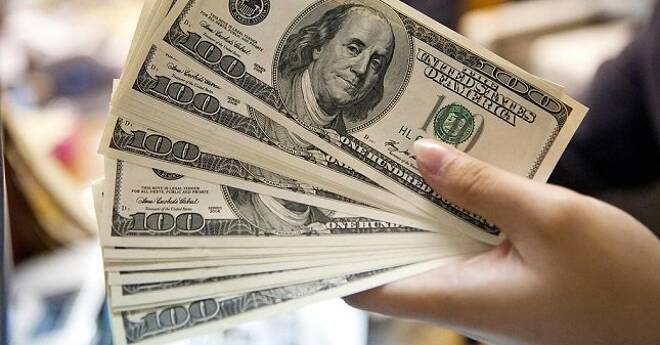Advertisement
Advertisement
How Far Can the Dollar Fall – It May Not Just be Data Dependent
By:
The busy economic calendar begins to bite through the day ahead, with the markets having a mass of stats to consider and that’s before having to factor in
The busy economic calendar begins to bite through the day ahead, with the markets having a mass of stats to consider and that’s before having to factor in noise from Capitol Hill, as Trump continues to stumble through his first year as U.S President.
Unsurprisingly, the RBA statement this morning was largely unchanged with the exception of reference to an appreciating AUD, as the RBA noted that the recent gains are likely to weigh on economic growth and inflation over the near-term. Positive manufacturing PMI numbers out of China offset any negative sentiment towards the AUD, with the direction of the U.S Dollar contributing to the AUD’s gains, the direction of the U.S Dollar now largely hinged on this week’s stats, the Dollar bulls in dire need of some solid stats to shift sentiment towards the U.S economy.
Ahead of this afternoon’s stats out of the U.S, macroeconomic data out of the Eurozone include finalized July manufacturing PMI figures. The figures will need to be pretty dire for the EUR to give up $1.18 levels ahead
1st estimate, 2nd quarter GDP figures out of the Eurozone, which may well raise expectations of a move by the ECB, despite the recent appreciation in the EUR.
Wedged between the manufacturing PMI numbers and GDP figures will be Germany’s unemployment numbers, which will play a minor role, barring any material weakness, the key focus being on growth for the quarter, as economic indicators continue to suggest a continued pickup in Eurozone growth through the 3rd quarter.
How the ECB will handle improving economic conditions and an appreciating EUR remains to be seen, but Draghi and the team will be hoping for a turnaround for the Dollar in the coming weeks.
Out of the UK, July’s manufacturing PMI will be watched closely as the markets prepare for Thursday’s monetary policy decision, BoE Monetary Policy Committee members having been on the quiet side in recent weeks, pulling back from the hawkish commentary in the wake of the June MPC. Positive numbers will certainly drive demand for the pound and raise expectations of a more hawkish MPC, though it remains to be seen whether the MPC will catch the markets off-guard come Thursday.
Once the markets have managed to catch their breath, focus will shift to stats out of the U.S this afternoon, with the FED’s preferred Core PCE Price Index figures scheduled to release, together with June personal spending and the market’s preferred ISM manufacturing PMI numbers for July.
Based on forecasts, we will expect the Dollar to struggle through the release of the data, with inflation and manufacturing figures expected to soften and personal spending lacklustre despite a continued tightening in the labour market, wage growth being the missing ingredient for increased consumer consumption and inflation.
It’s going to boil down to Friday’s nonfarm payroll and wage growth figures at the end of the day for the Dollar and, with the latest news from Capitol Hill another blow for the Dollar, the numbers are going to need to be stellar for a sustainable bounce back.
At the time of the report, the Dollar Spot Index was up just 0.05% at 92.935, with the EUR easing back 0.24% to $1.1813, while the pound down 0.06% at $1.3207 ahead of today’s data. It would generally be a tall order to bet against the Dollar at such levels, but with so many negative factors in play, things could go from bad to worse in the days ahead, the Dollar not only reflecting sentiment towards the U.S economy, but also the capabilities of the U.S administration and the ever rising geo-political risk that continues to hit the Dollar.
About the Author
Bob Masonauthor
With over 28 years of experience in the financial industry, Bob has worked with various global rating agencies and multinational banks. Currently he is covering currencies, commodities, alternative asset classes and global equities, focusing mostly on European and Asian markets.
Advertisement
